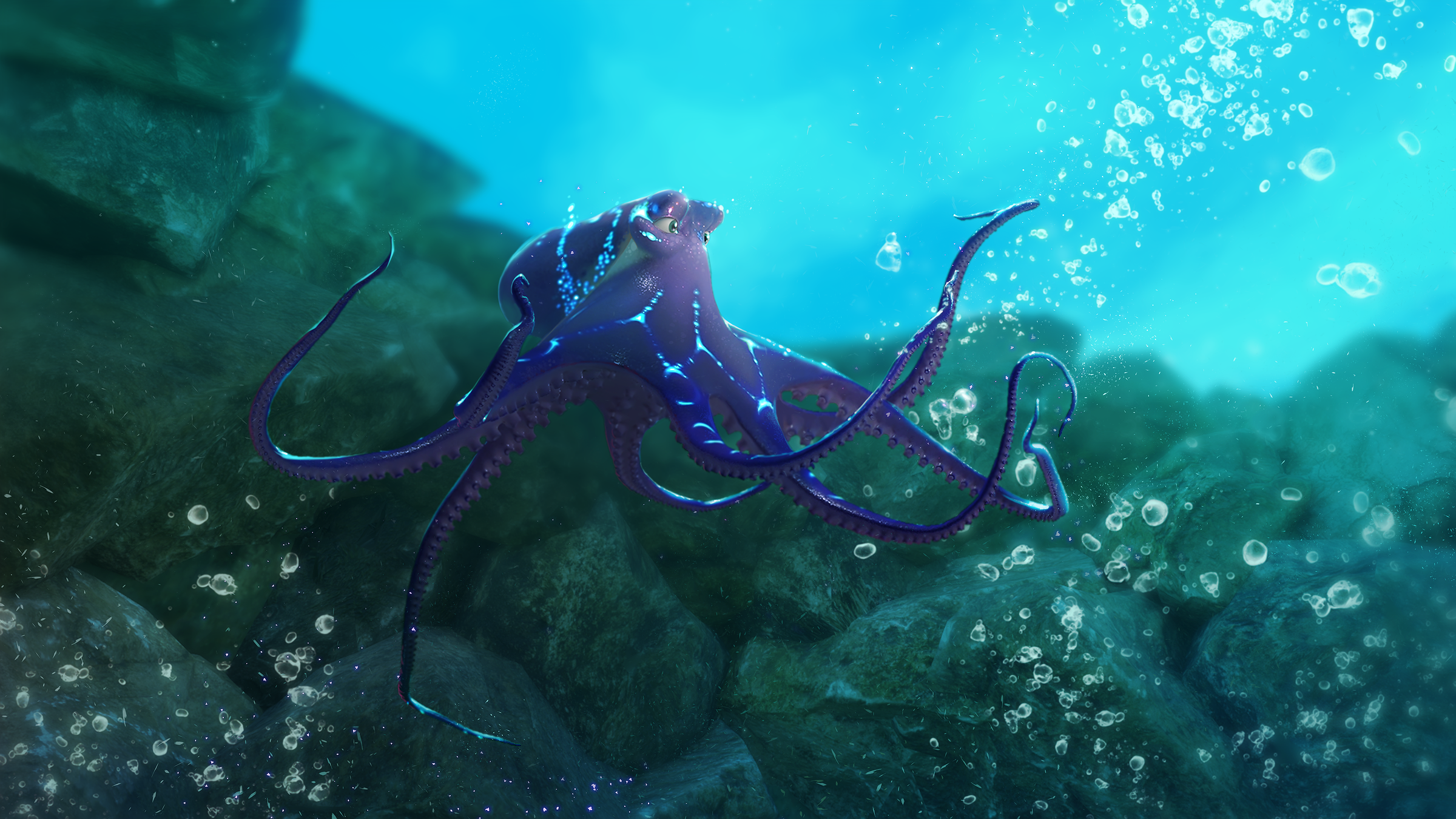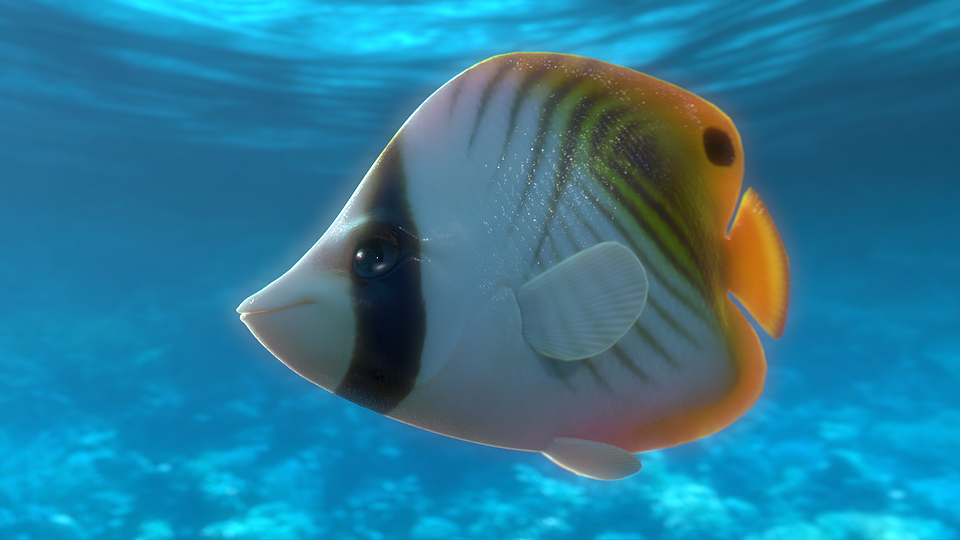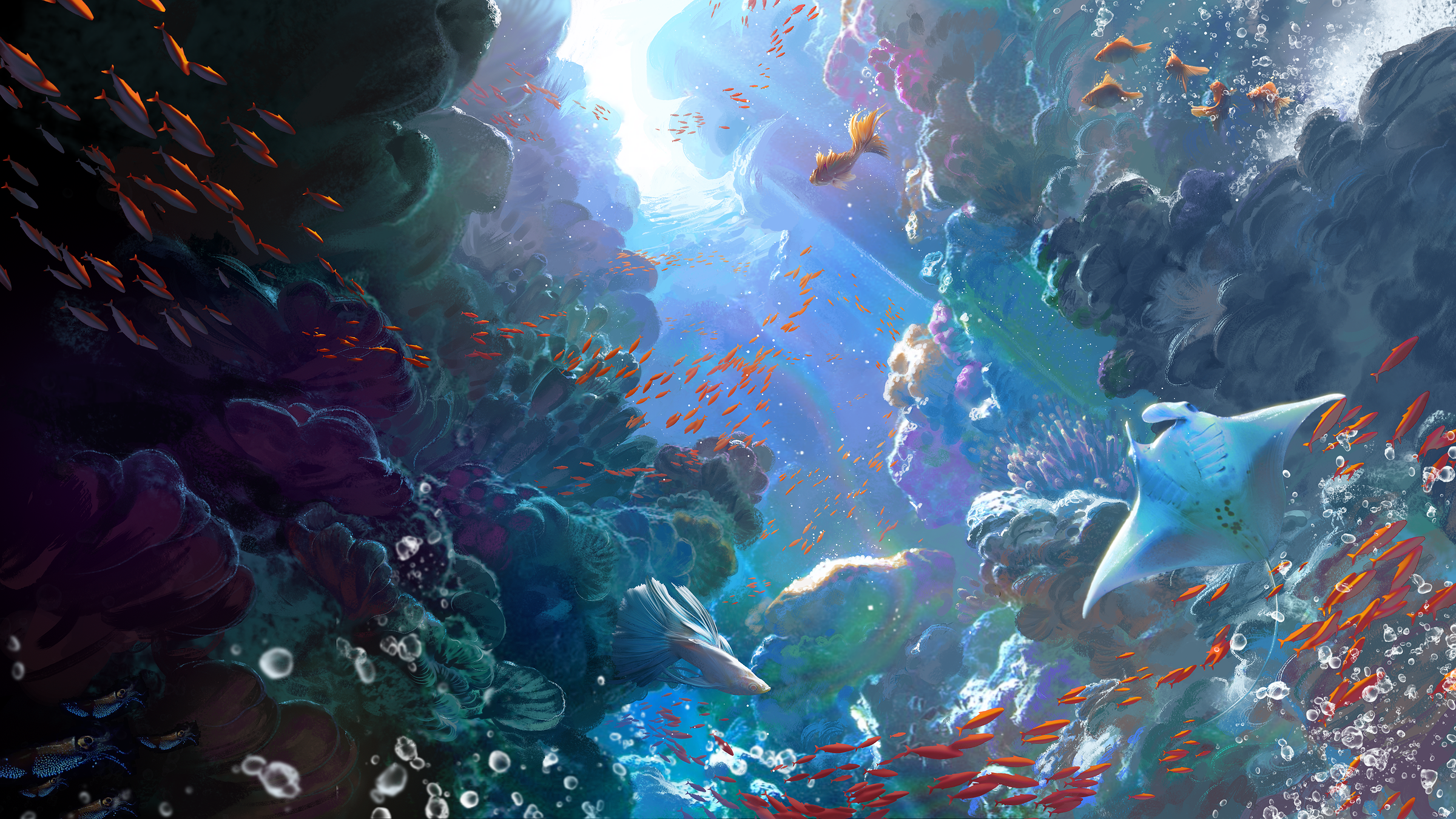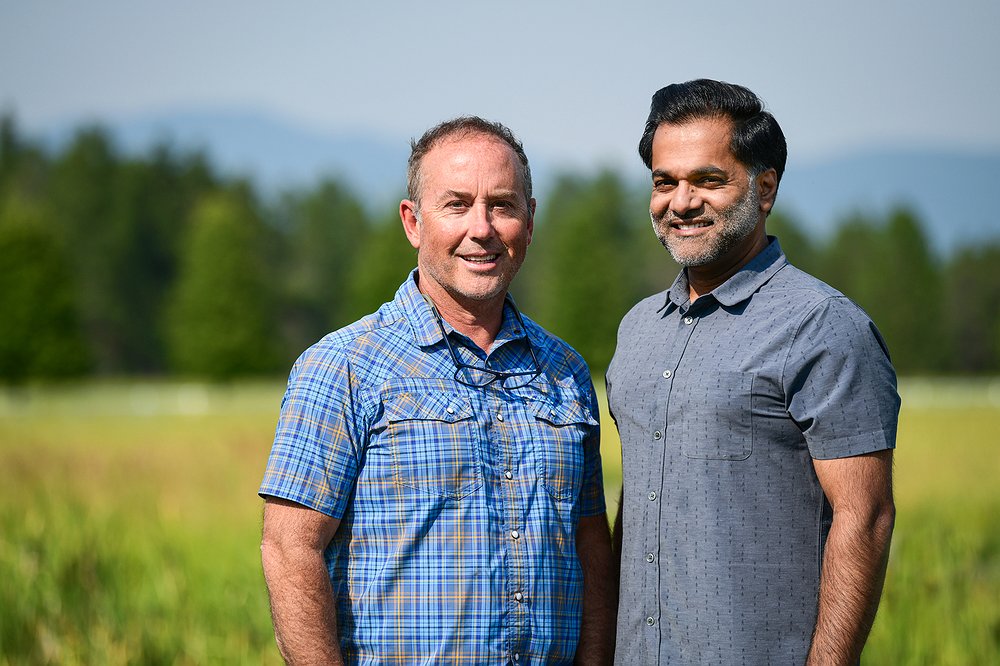Creating a world for recovery – virtual reality game aims to help brain injury patients
TAYLOR INMAN | Hagadone News Network | UPDATED 1 year, 4 months AGO
Taylor Inman covers Bigfork and the north shore for the Bigfork Eagle and hosts News Now and other podcasts for the Daily Inter Lake. Originally from Kentucky, Taylor started her career at the award-winning public radio newsroom at Murray State University. She worked as a general assignment reporter for WKMS, where her stories aired on National Public Radio, including the show “All Things Considered.” She can be reached at 406-758-4440 or at [email protected]. | August 4, 2024 12:00 AM
Putting on a virtual reality headset transports stroke recovery patients to a vibrant oceanic landscape. Sunlight streams in from the surface, illuminating a coral reef that is seemingly the last healthy environment in an otherwise destroyed world. In the distance, a shark goes after two sea lions, who don’t survive the fight.
Soon, a baby sea lion reveals itself. Poking its tiny head out of a patch of seaweed, it becomes clear that the player’s job is to nurse it back to health.
This is the premise of “The Last Reef” a video game created by NeuroAnimation, a company founded by Johns Hopkins University researchers Omar Ahmad and Promit Roy. Ahmad was also the director of the Kata Design Studio with the Department of Neurology at the university but has since left to start the company.
The two have been working on iterations of the game since the early 2010s with the goal of animating animals that moved and acted like real ones. After developing this for some years, they were approached by a physician at Johns Hopkins who asked if it could be applied to stroke recovery.
“Right off the bat, we were lucky enough to get a clinical trial, it was a $7 million clinical trial called the SMARTS2 trial. And what we showed is that with this dose and intensity and enrichment, we were able to be twice as effective as standard of care for stroke recovery,” Ahmad said.
It was clear they had a product that could help not only people recovering from stroke, but also people with brain injuries, elderly combatting cognitive decline, and others struggling with motor function. So, they decided to go public.
Ahmad and Roy founded NeuroAnimation, and although they have projects in other areas of the country, they've chosen to grow the company in Northwest Montana.
What is it about the games NeuroAnimation creates that makes them so effective for combating cognitive and motor decline? It all goes back to the animals, Ahmad said, who draw people in and make them want to come back.
Players will move through the dazzling undersea world, interacting with objects and a ton of adorable sea creatures. They can follow, fetch and react in real time to prompts the players give them.
“(Patients) are connected to these beautiful animals. They're trying to look at the beauty and the movement of the animal. And they're forgetting about their movement ... That's really where our passion met the need in patients, and it turned into something that became very beneficial for them,” Ahmad said.
Traditional physical therapy can be monotonous and oftentimes painful. So, the video game offers something a little different and allows patients to become immersed in a story while moving their bodies.
Ahmad said this is the biggest difference between traditional physical therapy and what they offer, because the game is very mentally engaging, it can lead to better outcomes for patients. The conclusion from their 2021 SMARTS2 trial said the game “may offer a new, enjoyable, efficient, and scalable way to deliver high-dose and intensive upper-limb therapy.”
THE FIRST animal created was a dolphin named Bandit. It was used in clinical trials and Ahmad said he still gets emails to this day from people talking about their experience with the dolphin.
Dr. Michelle Carlson with Johns Hopkins University studied how the game was received in the Brightview Senior Living in Maryland, where a group of elderly residents played with Bandit.
"They spontaneously would talk about the dolphin, they would buy stuffed animals and take pictures of themselves with it. So it has a lot of emotional and social bonding to the user,” Ahmad said.
In “The Last Reef” players will help Cici the Sea Lion bounce back, while their health also makes rebounds.
“As we help it back to health, we're also helping ourselves back to health. And that's the symbiosis of what we're doing. We've coined a term called 'avatar symbiosis' where you feel you sort of become one with this character,” said Tom DeSanto, the chief creative officer for NeuroAnimation.
DeSanto is a screenwriter and film producer, famously working on the Transformers and X-Men movies in the 2000s and 2010s. One of his most famous characters is Bumblebee, who he drew inspiration from when trying to create a loveable character for NeuroAnimation.
“The first thing a person looks at, whether it's in a movie or television show or in person ... they always look at the eyes first. Bumblebee in the original Transformers is just one of the other robots, right? And the film's design gave him toddler proportions, to make it more childlike. He's got a bigger head, bigger eyes and he sort of walks in that childlike way. Children fell in love with that character,” DeSanto said.
There’s another goal for the video game, according to Ahmad and his business partners. In addition to its brain health benefits, they want the game to serve as a health alternative to today’s video games for children. He also wants the game to encourage people to connect with nature and protect it.
“The respect and the connection to nature that is often missing in today's world. You know, I used to play video games when I was a kid, I loved them, they were inspiring from a technological point. But I do think the content out there has gotten out of hand in in the violent themes, the amount of time people are spending in it without moving without moving their body, right?” Ahmad said.
They view their product as something that could revolutionize the video game industry, putting a better option in the marketplace for a game that would encourage kids to move their body, while confronting themes about preserving nature and wildlife.
The emphasis on being close to nature is why they want to settle the company in the Flathead Valley.
Todd Burris, NeuroAnimation advisor and investor, said he was drawn to the project after meeting Ahmad during a visit to Whitefish. Ahmad wanted to move to the area with his family and needed a place to stay. Burris was able to offer his vacation rental, and soon, the two were becoming fast friends.
Burris was ready to retire from his career as a lawyer when he met Ahmad.
“I've had a lot of clients with severe brain injuries and there's been no treatment for them. So, as he started explaining NeuroAnimation, I got really intrigued by it and said, ‘Well, I want to learn more,’” Burris said.
Ahmad said Burris’ support has helped them get together a strong team of investors and partners. The hope is to eventually settle into an office somewhere in the area, becoming part of the community as the company grows.
In addition to putting down roots in Montana, the company has built a stroke recovery clinic in Columbus, Ohio. This location was chosen due to the area’s large population of stroke patients. The clinic will feature large areas for people to play NeuroAnimation games as part of their treatment. Patients will also be able to take home a console to play the game, which is currently in development.
A beta version of the game is expected to be released in late summer with a wider release before 2025. It will be available on the Meta Quest and Apple Vision Pro, with one version specifically for patients and another geared toward the general public. There is an upfront cost of buying the headset, but Ahmad hopes to keep subscription prices low so the game is accessible for anyone who needs it.
For more information about NeuroAnimation, visit neuroanimation.com.
Reporter Taylor Inman can be reached at 406-758-4433 or by emailing [email protected].
ARTICLES BY TAYLOR INMAN

Bigfork cross topples in windstorm after 52 years standing
The giant white cross on Montana 82 that has welcomed drivers into Bigfork from Somers for more than 52 years fell during last week’s intense windstorm.

New owners of Montana Trolley Co. want to keep tradition alive
From Christmas light tours to marriage proposals, Montana Trolley Co. plans to continue business as usual under new ownership this winter.

Whistling Andy Distillery celebrates 15-year milestone
Montana’s oldest distillery looks back on humble beginnings and more than a decade of serving high-quality, handcrafted spirits.











